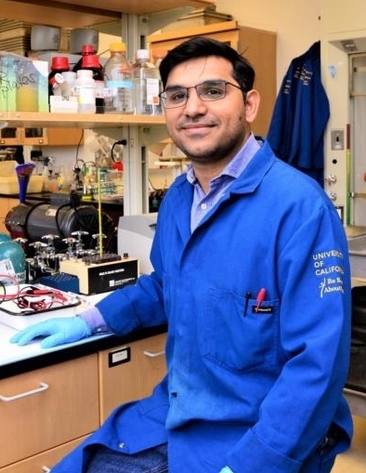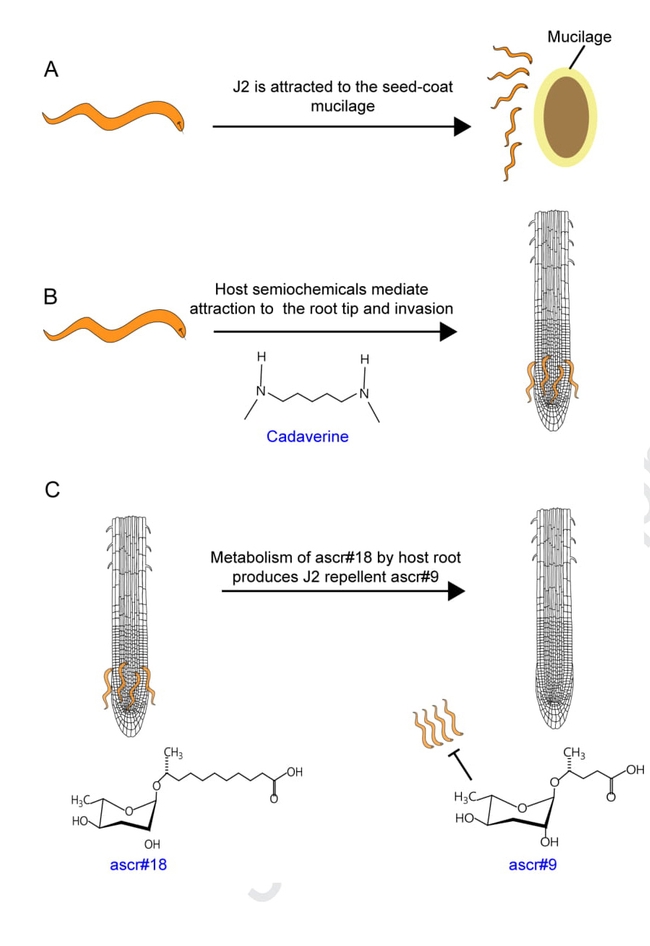- Author: Kathy Keatley Garvey

It's somewhat like that when plant-parasitic nematodes (microscopic round worms) play “chemical hide and seek” with their plant host, says plant pathologist Shahid Masood Siddique, an assistant professor in the UC Davis Department of Entomology and Nematology.
“The success of plant-parasitic nematodes depends on their ability to locate a suitable host in the soil,” says Siddique, corresponding author of the newly published Spotlight article, “Chemical Hide and Seek: Nematode's Journey to Its Plant Host,” in the journal Molecular Plant.
Nematodes can be deadly to plants, not only because of the direct damage they cause (they extract water and nutrients from their hosts such as wheat, soybeans, sugar beets, citrus, coconut, corn, peanuts, potato, rice, cotton and bananas) but the role of some species as virus vectors.
“Plant-parasitic nematodes are among the most destructive agricultural pests, causing more than $100 billion in losses per year in the United States,” Siddique said, noting that nematodes are especially damaging to potato, soybean and wheat crops.
Although the success of nematodes depends on their ability to locate a suitable host in the soil, what attracts them to their host “has largely remained unknown,” wrote the four-member UC Davis team of Siddique, Natalie Hamada, Henok Zemene Yimer and Valerie Williams. “Recent studies have revealed that host-seeking by nematodes is a complex process that involves multiple stages in the interaction.”
“Most damage is caused by a small group of root-infecting sedentary endoparasitic nematodes including cyst nematodes and root-knot nematodes (RKNs),” the team of UC Davis researchers wrote in their abstract. “Second stage juveniles (J2s) of plant-parasitic nematodes hatch from eggs into the soil and localize to the roots of host plants. The success of these non-feeding J2s depends on their ability to locate and infect a suitable host.”
For eight decades, scientists have researched the attraction of plant-parasitic nematodes to the host root, ever since the pioneering Maurice Blood Linford (1901-1960) of the University of Illinois, Urbana, Ill., observed in 1939 that the larvae of root-knot nematodes congregate in the cell elongation region behind the root cap.
“Both volatile and soluble components in the rhizosphere have been shown to influence nematode movement,” the UC Davis researchers wrote. “Methyl salicylate, a volatile chemical root signal, has been demonstrated to be a strong root attractant for RKN towards several Solanaceous plants (nightshade family). The non-volatile tomato root exudate quercetin was shown to elicit concentration dependent attraction or repulsion effect against Meloidogyne incognita to host root. Three recent studies have revealed that the recognition of and response to hosts by infective juveniles is a complex process that involves multiple stages in the interaction.”
Siddique focuses his research on basic as well as applied aspects of interaction between parasitic nematodes and their host plants. “The long-term object of our research is not only to enhance our understanding of molecular aspects of plant–nematode interaction but also to use this knowledge to provide new resources for reducing the impact of nematodes on crop plants in California.”



